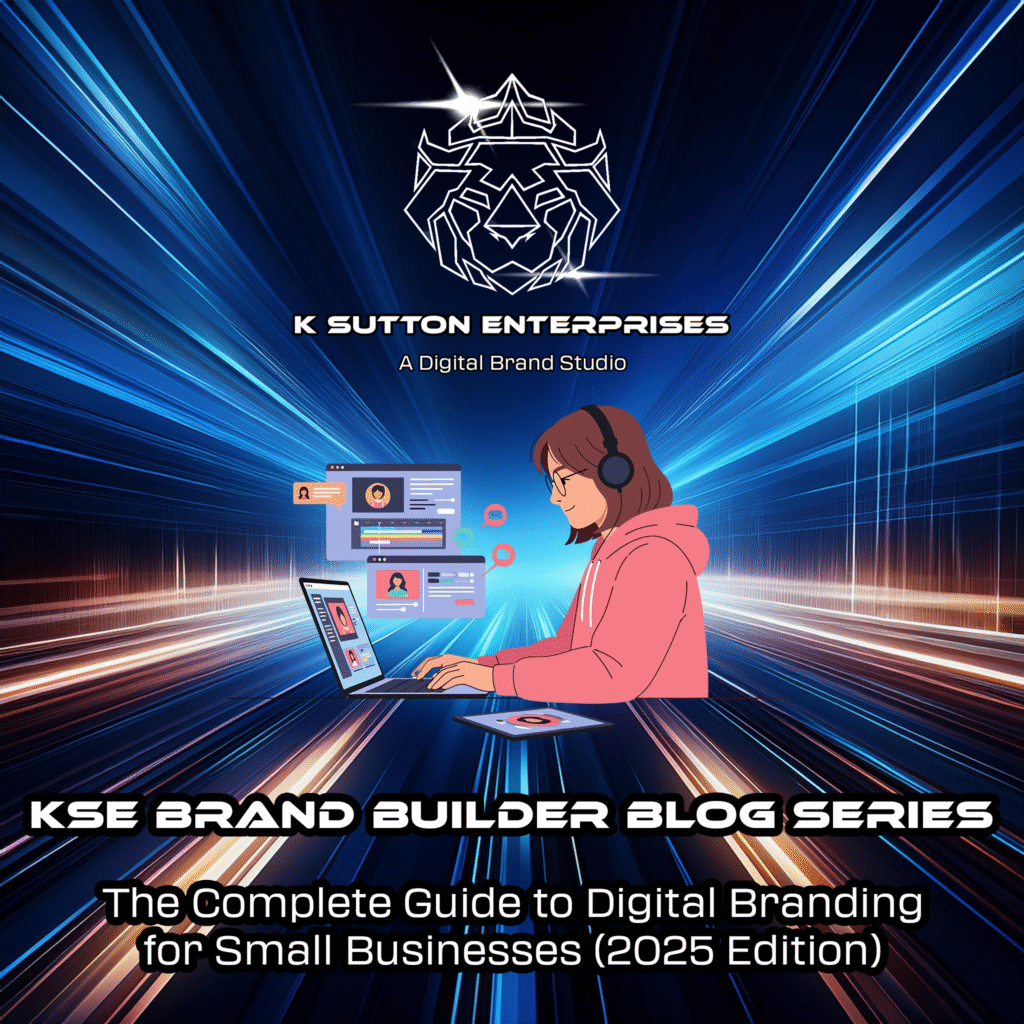Why Digital Branding Matters More Than Ever
In today’s digital-first world, your brand isn’t just your logo or website—it’s the entire online experience people have with your business. From the way you appear on Google, to the voice you use on social media, to how easy it is to navigate your website—digital branding is what sets you apart from competitors.
For small businesses, entrepreneurs, and even established brands needing a refresh, strong digital branding means:
Visibility → Showing up where your customers are searching.
Credibility → Building trust so people choose you over competitors.
Growth → Turning casual visitors into loyal customers.
This guide will walk you through the core elements of digital branding and how you can apply them no matter where your business is on its journey.
1. Define Your Brand Identity
Every strong brand starts with clarity. Ask yourself: What does my business stand for?
Key Steps:
Mission & Vision: Clearly define your “why” and what you want your business to achieve.
Core Values: Choose 3–5 guiding principles that shape how you operate.
Unique Value Proposition (UVP): Be able to answer, “Why should a customer choose me?”
Persona Layering:
Startups: Define your UVP early to stand out in crowded markets.
Entrepreneurs scaling: Revisit your values as you grow—are they still aligned with your customer base?
Established brands: Use this stage to refresh your positioning if your market has evolved.
2. Create a Consistent Visual Identity
Your visuals should be instantly recognizable across all platforms.
Branding Essentials:
Logo & Wordmark: A clean, versatile design that works on mobile, web, and print.
Color Palette: Choose 2–3 core colors plus accent tones.
Typography: Consistent font families across digital assets.
Photography/Imagery Style: Cohesive look that reflects your brand personality.
SEO Tip: Use your brand elements consistently in website alt text, file names (e.g., “kse-digital-branding-logo.png”), and social profiles to reinforce your presence in search.
3. Build a User-Friendly, SEO-Optimized Website
Your website is your digital storefront. It needs to be:
Mobile-first (Google prioritizes mobile design).
Fast-loading (40% of users leave if it takes longer than 3 seconds).
Optimized for SEO (keywords, metadata, schema markup).
Conversion-focused (clear CTAs on every page).
Persona Layering:
Startups: Use a clean, one-page or simple site that communicates your story.
Entrepreneurs scaling: Add lead-generation tools like landing pages, blogs, and email capture.
Established brands: Consider redesigns or UX audits to modernize and improve conversions.
4. Develop a Brand Voice & Messaging Strategy
The words you use are just as important as visuals. Your brand voice should reflect your personality and speak directly to your audience.
Tone: Formal, casual, professional, inspiring?
Messaging Pillars: Core themes (e.g., trust, innovation, affordability).
Storytelling: Use stories to humanize your brand.
Example: Instead of “We sell websites,” say, “We help small businesses create websites that attract customers and drive sales.”
5. Stay Consistent Across All Digital Channels
Your customers see you everywhere—social media, email, ads, Google. If your brand looks or sounds different in each place, trust drops.
Ensure consistency by:
Using the same logo, colors, and fonts across all platforms.
Maintaining a regular posting schedule.
Aligning website CTAs with email and social campaigns.
Pro Tip: Create a simple brand style guide (even a one-pager) so anyone on your team can follow the rules.
6. Invest in Content That Builds Trust
Digital branding thrives on content. Educational, valuable content builds authority and attracts leads.
Content Ideas:
Blog posts (SEO-friendly guides like this one).
Video explainers or testimonials.
Social media carousels with quick tips.
Case studies of client success.
Persona Layering:
Startups: Focus on “how-to” guides that answer common beginner questions.
Entrepreneurs scaling: Create lead magnets like ebooks or webinars.
Established brands: Share industry insights and thought leadership pieces.
7. Monitor & Adjust With Analytics
Branding isn’t a “set it and forget it” process. Use tools like Google Analytics, Search Console, and social media insights to see what’s working and refine over time.
Building a Digital Brand That Lasts
Digital branding is the foundation of long-term business growth. Whether you’re launching your first business, scaling to new markets, or refreshing your brand identity, the key is consistency, clarity, and connection.
👉 Ready to take your digital brand to the next level? Whether you’re launching, scaling, or refreshing your business, K Sutton Enterprises is here to build a brand strategy that works.

